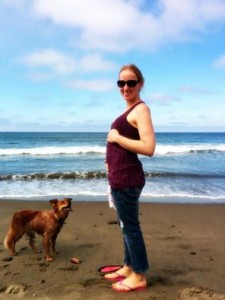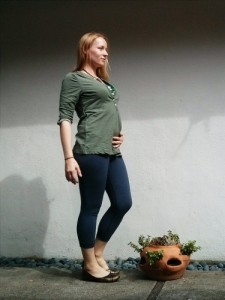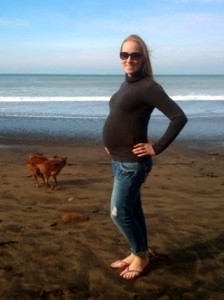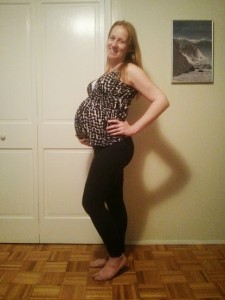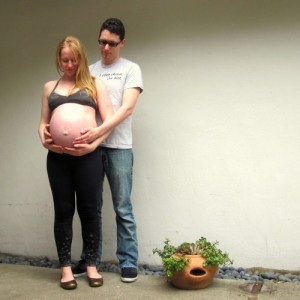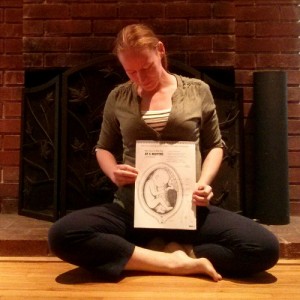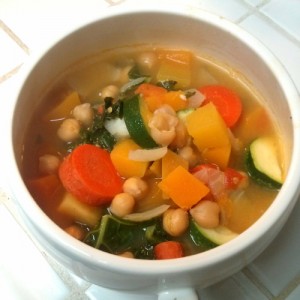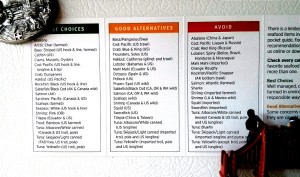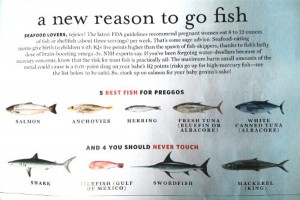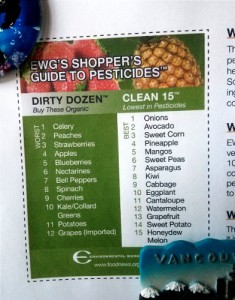This year I’m setting February resolutions because (A) I’ve been running late since I became a parent, and (B) gyms are ridiculously overcrowded in January.
Having a baby thrust me into survival mode for several months and everything except keeping my family clean, clothed, and fed got pushed to the back burner (which has been broken since we bought our house; getting it repaired is yet another deferred task). 2015 was the year of the baby. 2016 is the year of reestablishing the healthy, conscious, ambitious habits that I strayed from for the baby’s sake. I do not regret the choices I made in 2015—I gave the fleeting phase of new motherhood my everything, which was beautiful, joyful, challenging, purposeful, and all-consuming. 2016 is not about neglecting baby care, it’s about embracing my little one’s growing independence and taking ownership of the space it offers me to do and be more.
Here the habits I am forming over the next year:
- Eat as well as the baby eats. It is too regular an occurrence that I am feeding the baby freshly prepared organic yam, kale, chicken, and olive oil with one hand and myself Dijiorno pizza with the other. Now, going head-to-head with the baby, matching her for fruits, veggies, high-protein foods, and healthy fats. I’m on the hunt for meals we can both eat. Yesterday I made mini veggie patties her her and grown-up sized ones for my husband and myself, and it felt great to have a family meal we could all enjoy. I’m on the hunt for family recipes; please post any leads in the comments! In an infant nutrition class I took, the teacher reported that the most significant predictor of how kids end up eating is not what their parents feed them, what what parents eat themselves, so in the long run my eating habits are healthy for the baby too!
- Exercise every single day. I dropped down to my pre-pregnancy weight quickly, so the effects of pregnancy and childbirth on my body aren’t outwardly apparent. However, they persist. Last year, I blogged about my challenge with hypermobile joints during pregnancy. The effects have been lasting and uncomfortable (especially since breastfeeding continues to produce hormones that keep my joints lax). Daily exercise is no longer Monday: Step class, Tuesday: Vinyasa yoga, Wednesday: six mile run (and so on…) as it was five years ago. For now, doing fifteen minutes of simple physical therapy exercises before bed counts. To give me the time, space, and community to develop this goal, the baby and I have joined a gym with childcare. The other day, a friend who joined the same gym texted me: “I’m excited to get this baby weight off” and, embarrassingly, I initially interpreted her statement to mean drop the baby off at the daycare. Fitness has long been a haven for me, so along getting stronger and more stable, I’m excited for some real me time (getting out the house to do errands like getting my hair cut and legs waxed doesn’t seem like it should count).
- Reduce, reuse, recycle. Before the baby was born, I set an intention to harness my powerful love for her and extend it to all beings. This is hard to do during the tumultuous newborn stage. The baby took up all my love and energy, and I quickly became dependent on the convenience of overly-packaged takeout meals and Amazon Prime deliveries—environment be damned. I got lazy about recycling anything that needed to be washed and frequently disposed of green waste via the garbage disposal rather than dealing with the overflowing food scraps bin. Other than getting over my apathy, my first action item is to get recycling and green waste bins in every room of the house so that there is no excuse to throw junk mail or a used tissue into the trash. My second step is to reduce use of waste-producing items (paper towels are a big opportunity). Once these changes are in place, I’m committed to continuing to look for ways we can increase our contribution to a healthy environment.
- Take ownership of home ownership. When we bought our house, I saw so much potential in it! I was going to plant a vegetable garden, convert the patio into a zen oasis, re-landscape the front lawn into a drought-resistent bee-friendly labyrinth, plan and budget for a kitchen remodel down the line, and set up a garage organization system so that it wouldn’t get stacked to the rafters with empty Amazon packaging (as it is now). Two weeks after we closed on the house, we found out I was pregnant, and between the nausea and difficulty moving most of that went out the window. A year-and-a-half later I’m a long way from achieving that vision, and I keep using the baby as a less and less convincing excuse. It’s time to make an action items list and start checking things off.
- Dress like a grown-up. When I recently came across the hilarious image below, and it made me think twice about setting this goal, but I’m sticking with it. The timeframe in which it’s still acceptable to wear maternity jeans and yoga pants all the time expired months ago. The last two years have been transformational: I bought a house, I moved to the suburbs, I went through pregnancy, I became a mother, I got older, I stopped teaching yoga… My lifestyle has drastically changed and many of my old clothes are no longer comfortable, practical, or expressive of who I am now. I hate shopping, so I signed up for Stitch Fix, and am hoping to slowly piece together a more suitable wardrobe, month-by-month.
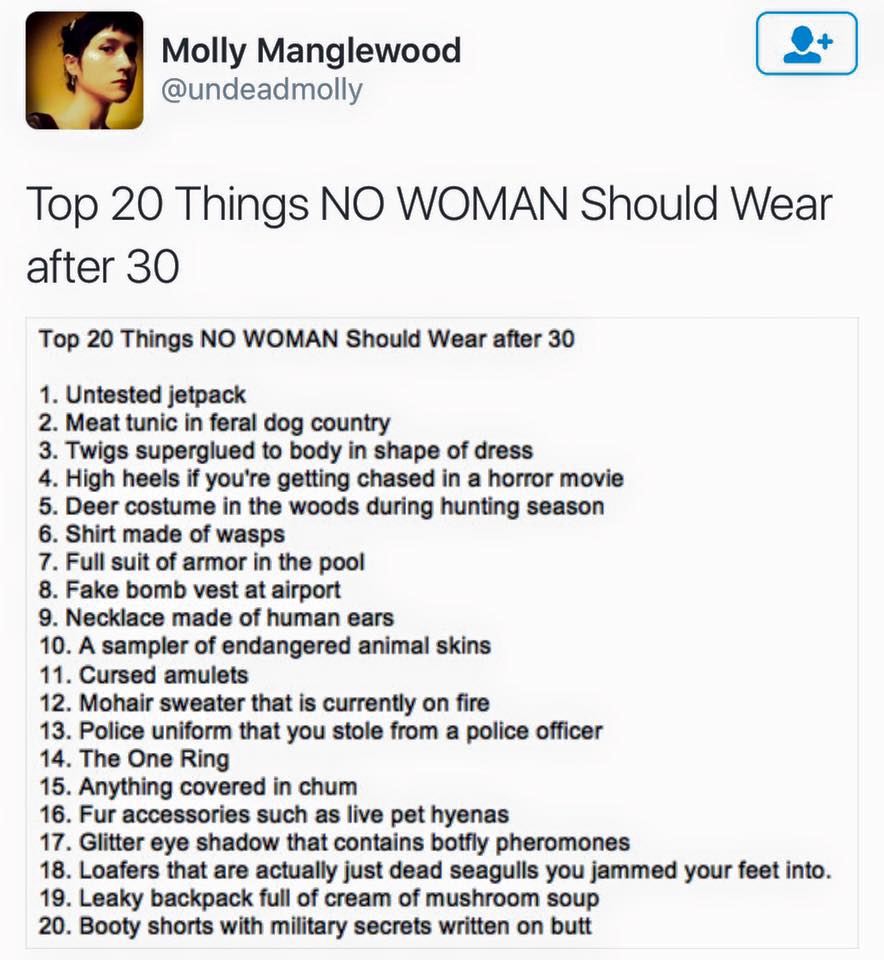
I guess it’s time to retire my shirt made of wasps…
What are your New Years Resolutions, and how are they going? Please share in the comments below!

